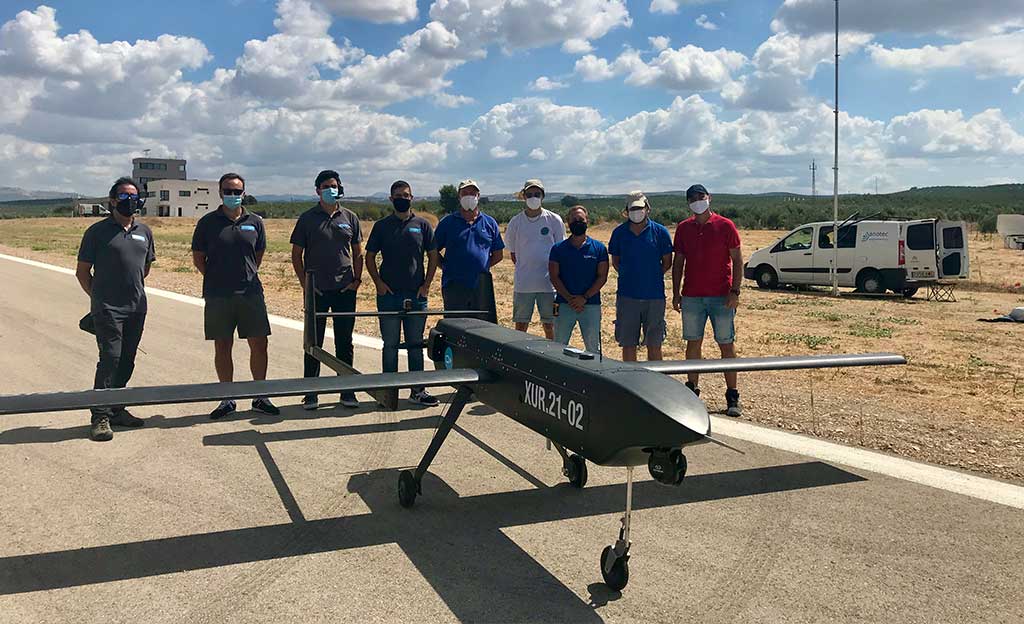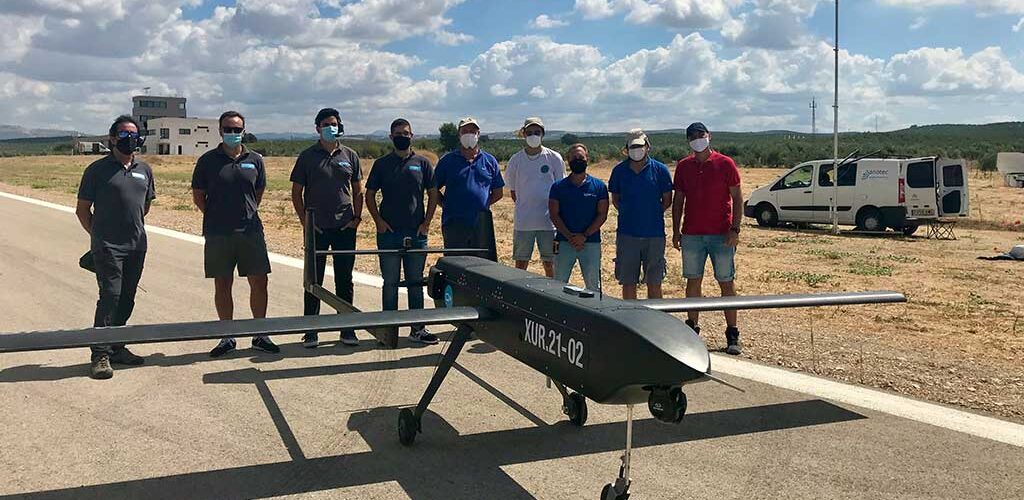A drone is an unmanned aerial vehicle (UAV) that is managed with remote control by oystick or through applications on smartphones, tablets, or computers. It is also important to note that a drone does not only refer to the aerial vehicles discussed in this article: there are also terrestrial, aquatic and submarine devices.
To be able to offer professional services with drones one must fulfil a series of requirements such as being registered as an operator, in Spain Agencia Estatal de Seguridad Aérea (AESA), have civil liability insurance and have obtained the title drone pilot, among others.

Different types and uses
Drones can be implemented in a multitude of sectors like environmental audits, logistics, military defence, agriculture, construction, media and entertainment and many others.
Applications such as defense, observation and surveillance, security, emergency and rescue, research and development, photography and filming or inspection have seen in drones a growth potential in their areas in an exponential way.
- For example, in fields such as emergencies and surveillance, they have been used in firefighting services, mountain rescue, to solve problems with traffic and to deliver medicines, especially in areas difficult to reach with other types of transport.
- In agriculture, it allows to carry out studies on crops, to evaluate vegetation or soil composition and to fumigate.
- An increasingly widespread use is in the realization of reconnaissance and study of the terrain, topographic studies, and generation of 3D scenarios. There is no doubt that, with their help, planning the ground is much easier and faster today.
- Drones are much more efficient when it comes to reporting what is happening on the roads, which is especially useful for making decisions quickly. Besides, using Artificial Intelligence systems, predictive analysis can be performed.
- At a more commercial level, the delivery of orders and parcels to a growing number of people is representing a genuine revolution and customer satisfaction. It is the future of last-mile delivery for consumer goods, as crucial as the last stage of e-commerce. According to a McKinsey report, it could result in 40% savings in shipping costs in addition to time savings that could result in a 15-20% increase in profit margin and a significant 15-20% price decrease.
- Drones are also being used by insurance companies after events for example natural disasters and other happenings, conducting a much more thorough investigation.
- The drones also provide an aerial inspection of buildings and infrastructure, power grids, wind turbines and solar panels.
- Another interesting use is the transmission of data by extending the internet network signals reaching remote places. Or for the broadcasting of events such as sports matches or concert, when coverage is lacking.
- For current trending topics like sustainability and the environment, drones play a very important role not only because of the savings that their use in the industry entails but also because they are capable of capturing information on pollution in industries and countries.
- On the other hand, drones combined with the Internet of Things (IoT) sensors are capable of counting goods, people, animals, or any other object that needs to be quantified. An especially useful factor to make more accurate forecasts and a much more reliable stock taking.
We have named some of the best-known uses but, without a doubt, the R&D departments are carrying out much more extensive research and prototyping work, to achieve greater optimization in all areas and sectors with drones as the axis of development and so that its integration into our daily lives is as safe as possible.
Positive consequences of the use of drones
Although there is still a long way to go to get the most out of the use of drones, positive consequences can already be noted
- Improving the competitiveness of companies.
- The creation of highly qualified employment,
- Reduction of environmental impact.
- Optimization of resources.
- Upgrading the level and quality of life of citizens.
The drone has become a new tool that supports sustainability policies during the 21st century.
Disadvantages
- If we were to identify disadvantages in the use of drones, we would say that electric propulsion still needs great advances, its Achilles heel being the length of time in flight. The integration with the current area navigation system has not yet been completely solved, as well as the security against possible cyber-attacks.
- On the other hand, the public still mistrusts these devices, among other reasons due to the noise they generate, intrusion of privacy, fear of possible errors and accidents. These negative attitudes must be solved and evangelizing work must be carried out so that society sees it as an advantage and not as a problem with which they do not want to live. Fear is lost with knowledge.
The drone market in Spain
The drone market in Spain is very atomized, a market characterized by fragmentation and the small size of the sector. There are a variety of small companies, manufacturers, operators, and training academies, as well as a few research centres. Most operators have a local or regional component. Regarding the business areas, almost 40% are focused on audiovisual and entertainment, but the infrastructure, agriculture and environment, security and defence areas, as well as the logistics and insurance sector have begun to incorporate this type of technologies and devices in their business strategies.
Drones and noise measurement
The drone market is professionalizing. With the extension of its use, the regulations are also progressing to a level of detail of requirements, safety, and noise standards that they must comply with.
In 2021, new European legislation on the regularization of drones will come into force, which will achieve homogenization of European Union legislation, facilitating the path for operating companies and pilots. On the other hand, it will mean the democratization of the use of drones to individuals, SMEs and industries with all the advantages that their use entails.
This regulation will impose a series of technical requirements and limitations depending on the risk of the planned operation. And of course, the issue of noise measurements that it generates will appear on the board of issues to be discussed.
The measurement of noise related to any type of flight and in this case for drones is increasingly important, as has happened with energy efficiency and other environmental impacts.

